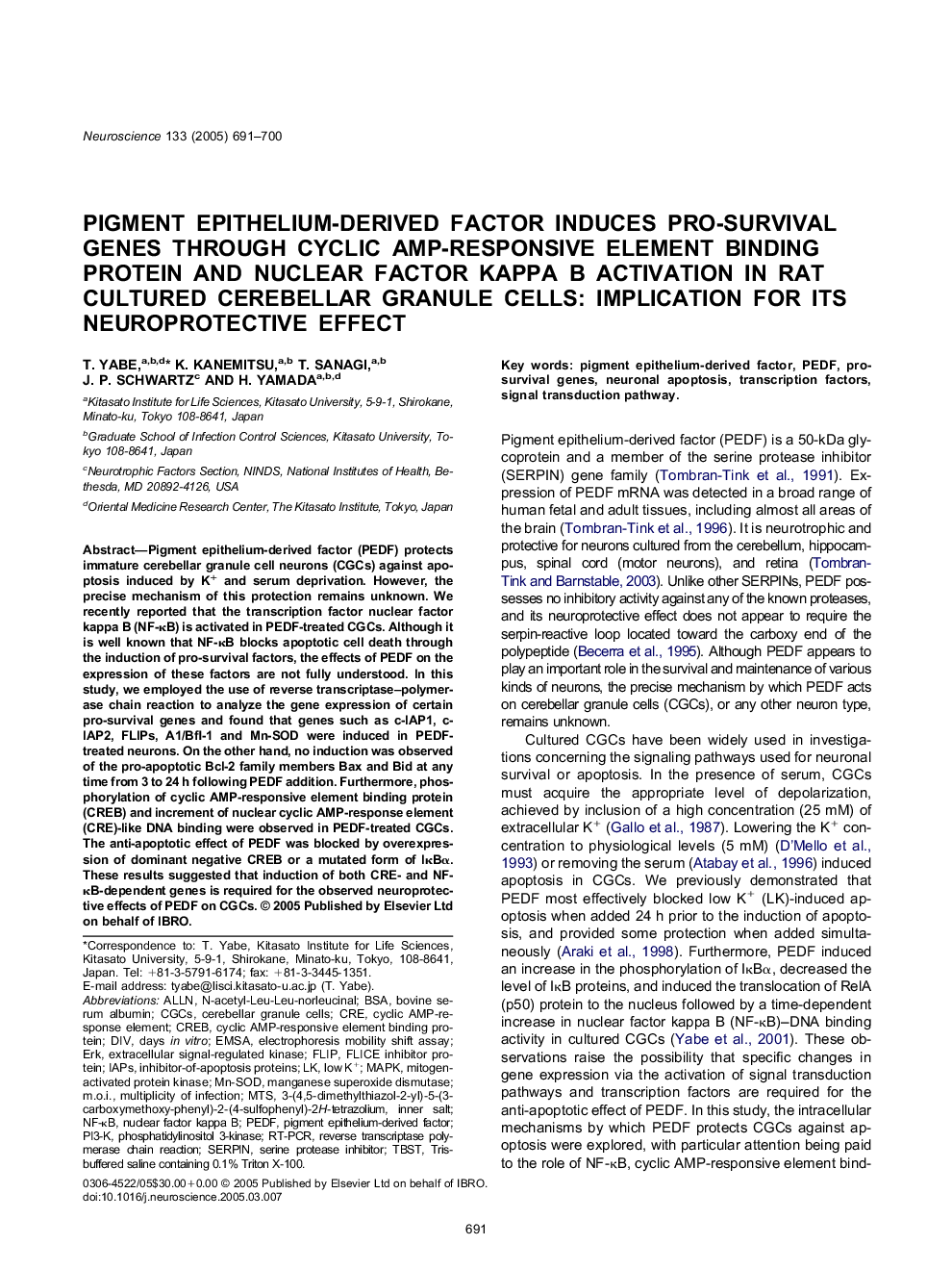| Article ID | Journal | Published Year | Pages | File Type |
|---|---|---|---|---|
| 9425618 | Neuroscience | 2005 | 10 Pages |
Abstract
Pigment epithelium-derived factor (PEDF) protects immature cerebellar granule cell neurons (CGCs) against apoptosis induced by K+ and serum deprivation. However, the precise mechanism of this protection remains unknown. We recently reported that the transcription factor nuclear factor kappa B (NF-κB) is activated in PEDF-treated CGCs. Although it is well known that NF-κB blocks apoptotic cell death through the induction of pro-survival factors, the effects of PEDF on the expression of these factors are not fully understood. In this study, we employed the use of reverse transcriptase-polymerase chain reaction to analyze the gene expression of certain pro-survival genes and found that genes such as c-IAP1, c-IAP2, FLIPs, A1/Bfl-1 and Mn-SOD were induced in PEDF-treated neurons. On the other hand, no induction was observed of the pro-apoptotic Bcl-2 family members Bax and Bid at any time from 3 to 24 h following PEDF addition. Furthermore, phosphorylation of cyclic AMP-responsive element binding protein (CREB) and increment of nuclear cyclic AMP-response element (CRE)-like DNA binding were observed in PEDF-treated CGCs. The anti-apoptotic effect of PEDF was blocked by overexpression of dominant negative CREB or a mutated form of IκBα. These results suggested that induction of both CRE- and NF-κB-dependent genes is required for the observed neuroprotective effects of PEDF on CGCs.
Keywords
IAPSEMSAcyclic AMP-response elementm.o.icyclic AMP-responsive element binding proteinN-acetyl-leu-leu-norleucinalALLNPEDFFLIPCGCsTBSTPI3-KCREBRT-PCRNF-κBCREERKMTSBSAMAPKMn-SODSERPINelectrophoresis mobility shift assaybovine serum albuminNeuronal apoptosisSerine protease inhibitorDIVdays in vitrocerebellar granule cellsmanganese superoxide dismutasePigment epithelium-derived factorTranscription factorsnuclear factor kappa BPhosphatidylinositol 3-kinaseSignal transduction pathwayreverse transcriptase polymerase chain reactionmitogen-activated protein kinasemultiplicity of infectionextracellular signal-regulated kinase
Related Topics
Life Sciences
Neuroscience
Neuroscience (General)
Authors
T. Yabe, K. Kanemitsu, T. Sanagi, J.P. Schwartz, H. Yamada,
